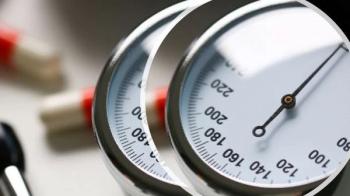
In CHA2DS2-VASC and HAS BLED, the “H” Stands for Persistent Risk
After stroke and bleeding risk are calculated and anticoagulation commences, hypertension control is essential to prevent CV events.
The acronyms CHA2DS2-VASC and HAS BLED have become part of the stroke and anticoagulation vernacular particularly in discussions of atrial fibrillation (AF). The decision to anticoagulate to prevent embolic stroke in AF depends in part on a CHA2DS2-VASC score ≥3. A significant risk of bleeding while on anticoagulation therapy is predicted by a HAS BLED score ≥2. The “H” stands for “hypertension” in both scores-a ubiquitous risk factor for a host of cardiovascular complications. Unfortunately, uncontrolled hypertension is still a serious problem after anticoagulation is accomplished.
A Japanese study of7406 patients with AF prescribed anticoagulation to prevent thromboembolic stroke, focused on the risk/benefit outcomes of controlling blood pressure rather than on the presence of hypertension per se (it was a subanalysis of the J-Rhythm Registry Study).1 In Japan warfarin remains the mainstay of anticoagulation in persons with nonvalvular AF (versus the shift in the United States toward use of the direct acting oral anticoagulants [DOACs]). The authors remind us that hypertension is comorbidity seen most often with AF.
The outcomes studied were thromboembolism and occurrence of major hemorrhage. A systolic blood pressure of ≥136 mm Hg recorded at the time closest to either negative outcome was significantly associated with both. The authors concluded that, “BP control appears to be more important than a history of hypertension and baseline blood pressure values at preventing thromboembolism and major hemorrhage in patients with nonvalvular atrial fibrillation.”1
“BP control appears to be more important than a history of hypertension and baseline blood pressure values at preventing thromboembolism and major hemorrhage in patients with nonvalvular atrial fibrillation.”1
These data may seem inconsistent with treatment in locations where DOACS are the preferred therapy for AF. A similar study from Europe in which patients with AF were treated with the DOAC ximelagatran provides a comparison.2 (NB: The agent is no longer prescribed as it was withdrawn from the European market because of liver safety issues.) This study was also designed as a post hoc analysis-of pooled patients from the
When the CHA2DS2-VASC and HAS BLED scores indicate anticoagulation for atrial fibrillation’s potential complications, uncontrolled hypertension is an ominous sign.
References:
1. Kodani E, Atarashi H, Inoue H, et. al. Impact of blood pressure control on thromboembolism and major hemorrhage in patients with nonvalvular atrial fibrillation: subanalysis of the J-Rhythm Registry. J Am Heart Assoc. 2016; 5, e004075. doi 10.116/JAHA.116.004075. https://www.ncbi.nlm.nih.gov/pmc/articles/PMC5079049/
2. Lip GY, Frison L, Grind M. Effect of hypertension on anticoagulated patients with atrial fibrillation. Eur Heart J. 2007;28:752-759.
https://academic.oup.com/eurheartj/article/28/6/752/2887674
Newsletter
Enhance your clinical practice with the Patient Care newsletter, offering the latest evidence-based guidelines, diagnostic insights, and treatment strategies for primary care physicians.



















































































































































































































































































